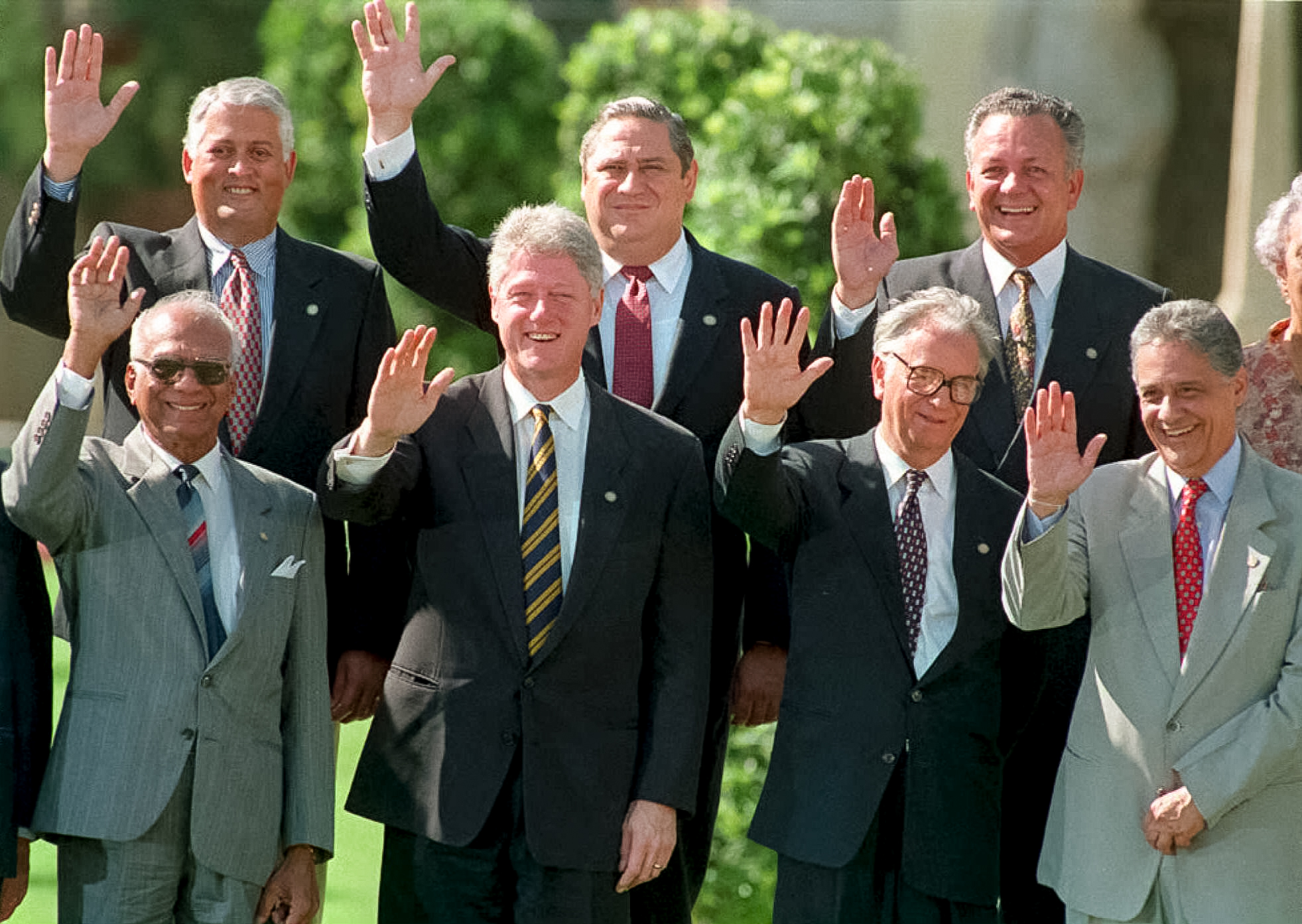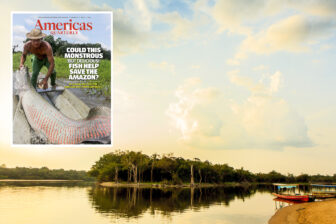This article is adapted from AQ’s special report on the Summit of the Americas | Leer en español
I ’ll never forget the sense of limitless possibility. During a remarkable 48 hours in 1994, leaders from every nation in the Americas but one joined together in Miami for a celebration of an entire hemisphere, newly emerging from Cold War darkness, united in a vision of the world’s first fully democratic region committed to open markets and social development. As hard as it may be now to envision, the first Summit of the Americas promised to put aside deep divisions to pursue a robust agenda agreed, improbably, by consensus.
There in the now-faded “class photo” from Miami was newly elected President Eduardo Frei of Chile, proving that democracy was sustainable after the oppressive Augusto Pinochet dictatorship. Violeta Chamorro was also there, having defeated Nicaragua’s once and future dictator Daniel Ortega in free and fair elections. So was Haiti’s Jean-Bertrand Aristide, replacing disgraced dictator Raoul Cédras. Mexico’s “accidental president” Ernesto Zedillo, whose own actions would prove decisive to advance Mexican democracy in the 2000 elections, was there. Venezuela’s Rafael Caldera sought to promote energy cooperation as a priority. In a show of democratic strength and support, Brazil sent both its incoming and outgoing presidents. Nobody wore a military uniform.
Hosts Bill Clinton and Al Gore, fresh from Congressional victories on NAFTA and the WTO Uruguay Round, came to the summit with a domestic mandate to pursue the hemisphere-wide trade agenda that regional leaders were clamoring for (rather than the other way around). And they got it. Summit documents record a comprehensive agenda of significant initiatives, but the headline was an agreement to conclude a Free Trade Area of the Americas (FTAA) by 2005. Returning to Washington from Miami, I had the sense that the hemisphere was embarking on a new, sustainable, exciting direction that would lead to increasing prosperity, decreasing inequality and corruption, and full insertion into the rapidly globalizing economy.
While many would welcome closer ties with Washington, others are turning instead to an alternative partner that is expanding, rather than shrinking, its regional presence: China.
while many would welcome closer ties with Washington, others are turning instead to an alternative partner that is expanding, rather than shrinking, its regional presence: China.
In hindsight, that was wildly optimistic. Today, mention of the FTAA elicits sneers, mostly. While countries such as Argentina and Brazil turned their back on trade by the 2000s, Washington had largely done so by the late 2010s. NAFTA successor USMCA could be the vehicle that launches new efforts, but it threatens to be the last significant U.S. trade initiative for some time.
Which simply means that as the United States hosts the next Summit of the Americas in June, hemispheric leaders looking for an economic boost to help recover from the covid pandemic and ward off increasing dollar-denominated debt loads, spiking energy prices and inflation, amid other challenges, may have to look elsewhere. The region seeks enhanced trade and investment—and while many would welcome closer ties with Washington, others are turning instead to an alternative partner that is expanding, rather than shrinking, its regional presence: China.
On the ground, the contrast between U.S.-hosted summits is stark. Since 1994, both Nicaragua and Venezuela have joined undemocratic Cuba, subverting rather than protecting basic human rights. Haiti is suffering through yet another political crisis in the wake of the unsolved assassination of Jovenel Moïse. El Salvador’s leader routinely takes to social media to bash U.S. officials by name. U.S. officials sometimes repay the favor, adding in Guatemala for good measure. Meanwhile, reportedly defying explicit U.S. entreaties, the presidents of Argentina and Brazil each turned up in Moscow mere days before Russia’s invasion of Ukraine. Mexico’s president has rejected U.S. complaints about press freedoms and journalists’ murders, and the bilateral relationship is increasingly complicated.
It all adds up to a challenging environment for summit planners. While every democratically elected leader is invited, it’s still not clear who will accept. Heavy diplomatic lifting is required to ensure success.
In addition to a unified, full-throated condemnation of Russia’s move on Ukraine, there are at least three priorities for urgent attention. First, covid relief: It is vital that Latin America and the Caribbean fully emerge from the pandemic that has caused so much heartache. Agreement to #VaccinateTheAmericas would be an important start, as well as ensuring that the region is able to address the inevitable next pandemic.
Second, economic recovery, despite higher prices for commodities exports, is not guaranteed, particularly in an inflationary environment. Active consideration must be given to significant economic support including expanded trade—even if a formal deal is off the table.
Finally, democracy cannot be taken for granted. Due to Venezuela’s collapse, the region is experiencing the worst humanitarian crisis in its modern history. Nicaragua’s migration pressures threaten to intensify. Cuba and Haiti may be next. A renewed commitment to democratic governance, with enhanced tools to support it, should be at the very top of the agenda.
The Americas are in a different place today than during the first summit. But with a pragmatic mindset and realistic goals, and something meaningful to offer, the United States can once again host a summit that will bring the region together around a common agenda and set a course for enhanced cooperation. Given hard work, goodwill, and a little luck, the region can restore the spirit and promise of a more hopeful and sustainable future for all.
Farnsworth, a former official at the White House, Office of the U.S. Trade Representative and State Department, attended the 1994 summit as part of the State Department’s diplomatic outreach and policy coordination team.









